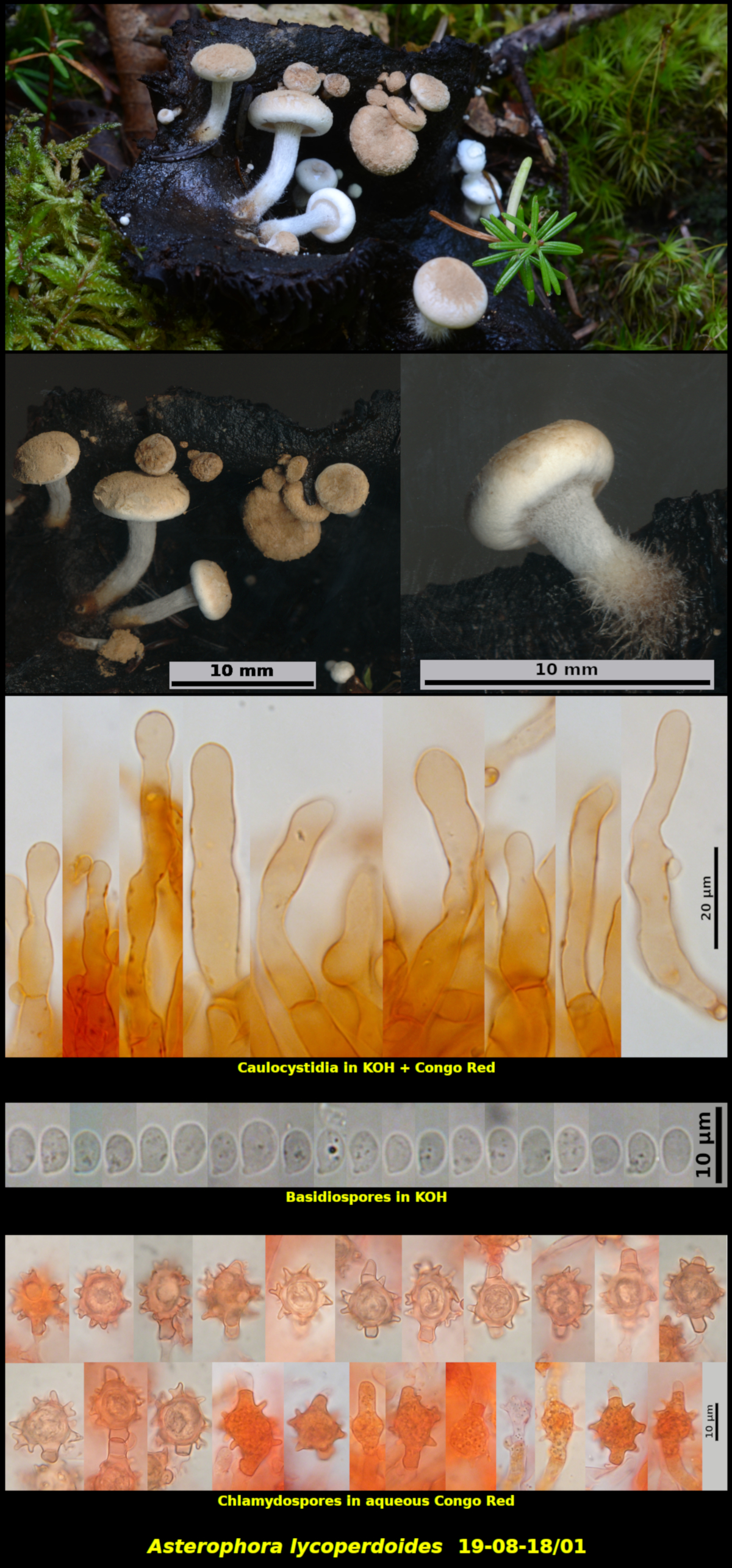Fleshy Fungi of New Brunswick >>
Asterophora lycoperdoides
Asterophora lycoperdoides(Bull.) Ditmar

Gregarious (many) on, and firmly attached to, blackened basidiomata of Russula dissimulans, associated with Abies balsamea and Betula cordifolia, Little Lepreau, New Brunswick (19-08-18/01).
Pileus convex at first and remaining so at maturity, dry and finely tomentose at first, later becoming powdery with conidia, white at first, becoming pale orange to greyish orange (HSV35:15-30:90-95) as the conidia mature, 7-18 mm in diameter. Stipe equal, white, white-tomentose, 13-18 X 3-5 mm. Lamellae lacking or greatly reduced, represented by a soft homogeneous tissue of clamped hyphae bearing a layer of basidia at its surface. Flesh similar in colour to the greyish orange mature pileus, slightly darker in the stipe, white near the surface of the pileus but gradually turning greyish orange from the outside inward, with a strong farinaceous odour.
Basidiospores forming a very weak spore print, ellipsoidal, smooth, hyaline, 4.6-6.6 x 3.3-4.6 μm, Q = 1.34-1.71 (average[51]: 5.5 x 3.6 μm, Q = 1.51). Basidia clavate, 4-spored, with a basal clamp connection. Hymenial cystidia not seen. Caulocystidia abundant on the upper part of the stipe, irregularly cylindrical to lageniform, often with a swollen apex.Pileipellis a thick tangled tomentum, soon becoming converted to chlamydospores. Chlamydospores produced on the upper part of the pileus as thallic intercalary chlamydospores, yellow orange in mass, ellipsoidal to subglobose, ornamented with large coarse spines, with spines often bi- or trifurcate, 12.9-14.8 x 9.4-12.1 μm exclusive of the spines, with spines 3.5-4.5 μm high and 1.7-3.4 μm broad at the base.
Asterophora lycoperdoides grows on the decaying basidiomata of other mushrooms, usually species of Russula or Lactarius. It is unusual among mushrooms in having a dominant asexual presence in the form of large spiny chlamydospores produced on the surface of the pileus. The sexual form, the basidia and basidiospores, is far less conspicuous than the asexual one. The lamellae are greatly reduced to an almost smooth hymenium and the basidia do not produce a heavy spore print.
The are two species of Asterophora known in eastern Canada, A. lycoperdoides and A. parasitica. Both occur on Russula species but are otherwise rather dissimilar. While the lamellae of A. lycoperdoides are reduced and the chlamydospores strongly spiny, A. parasitica has well-developed lamellae and smooth chlamydospores.
Photographs: D. Malloch (19-08-18/01).